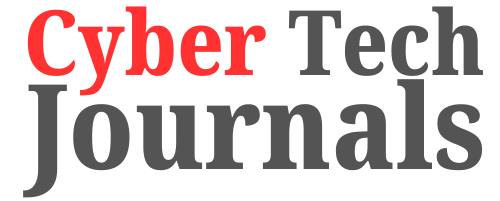Have you ever imagined your business’s bank account being emptied because of a single email? Or your company’s secrets falling into the wrong hands? It sounds like a nightmare, right? Unfortunately, for many businesses, this isn’t a bad dream; it’s the harsh reality of email compromise.
As we look towards 2025, cybercriminals are getting smarter, and their tactics are becoming more sophisticated. Email remains one of the most common and effective ways for them to sneak into your business’s digital life. But don’t worry, I’m here to tell you that you’re not powerless. In this comprehensive guide, I’m going to walk you through everything you need to know to protect your business from email compromise and build a strong defense. We’ll explore what these attacks look like, why they’re so dangerous, and, most importantly, the practical steps you can take to safeguard your company’s future. Let’s make sure your business is ready for anything 2025 throws its way!
Table of Contents
Highlights
- Email compromise is a major threat: Cybercriminals use clever tricks like phishing and business email compromise (BEC) to steal money, data, or disrupt operations.
- Your employees are your first line of defense: Regular training on how to spot suspicious emails is crucial for building a “human firewall.”
- Strong technical defenses are non-negotiable: Implement multi-factor authentication (MFA), email authentication (DMARC), and advanced email security solutions.
- Have a plan for when things go wrong: A clear incident response plan helps you react quickly and minimize damage if an attack happens.
- Security is an ongoing effort: Regularly update your systems, review your strategies, and stay informed about new threats to keep your business safe.
What Exactly is Email Compromise? Understanding the Threat
Before we dive into how to protect your business from email compromise, let’s make sure we’re all on the same page about what it actually is. Think of email compromise as a broad term for any attack where cybercriminals use email to trick you or your employees into doing something that benefits them, usually by pretending to be someone trustworthy. It’s not just about getting a virus; it’s often about psychological manipulation, known as social engineering.
Imagine getting an email that looks like it’s from your CEO, asking you to urgently transfer money to a new vendor. Or an invoice from a supplier that looks perfectly legitimate, but the bank details have been subtly changed. These are classic examples. The goal isn’t always money; sometimes it’s to steal sensitive information, gain access to your systems, or even just damage your reputation.
The scary part? These attacks are getting incredibly believable. With tools available online, it’s easier than ever for criminals to create fake emails that are almost impossible to distinguish from real ones, often using information they’ve gathered about your business from public sources like social media.
The Rise of Sophisticated Attacks
In the past, phishing emails were often easy to spot – bad grammar, strange links, generic greetings. Not anymore. Today’s email compromise attempts are highly targeted, well-researched, and often personalized. This is why it’s so critical for businesses of all sizes to understand this threat. Even small businesses are targets because they often have fewer security resources, making them easier prey. If you’re running a smaller operation, understanding cybersecurity for small businesses is more vital than ever.
“Email compromise isn’t just a technical problem; it’s a human problem. It preys on trust and urgency, making it incredibly effective.”
Why Email Compromise is a Big Deal for Your Business
You might be thinking, “My business is small, why would they target me?” The truth is, every business, regardless of size, holds something of value to a cybercriminal: money, data, access to your network, or even just your good name. The impacts of a successful email compromise attack can be devastating and long-lasting.
Let’s break down some of the major consequences:
- Financial Loss: This is often the most immediate and painful impact. Business Email Compromise (BEC) scams alone have cost businesses billions of dollars globally. Imagine a fraudulent wire transfer that empties your accounts, or paying a fake invoice for hundreds of thousands of dollars. Recovering that money is incredibly difficult, if not impossible.
- Data Breach: Email compromise can be the entry point for a wider data breach. Once inside your email system, attackers might gain access to sensitive customer information, employee data, intellectual property, or financial records. This leads to regulatory fines, legal battles, and massive reputational damage. Remember, understanding information security and its role in cybersecurity is fundamental to preventing such breaches.
- Reputational Damage: Trust is hard to build and easy to destroy. If your customers or partners find out your business was compromised, they might lose faith in your ability to protect their information. This can lead to lost sales, damaged partnerships, and a long road to recovery.
- Operational Disruption: An attack can shut down your email system, disrupt supply chains, or even freeze your entire network if malware is introduced. This means lost productivity, missed deadlines, and a chaotic work environment.
- Legal and Compliance Headaches: Depending on your industry and location, data breaches often come with strict reporting requirements and potential fines. For example, if you store customer data, you might be subject to regulations like GDPR or CCPA. Failing to comply can be very costly.
| Type of Impact | Description
Protect Your Business from Email Compromise: The 5 Pillars of Defense
Now for the real meat of this guide: how to protect your business from email compromise in 2025. This isn’t a one-and-done thing; it’s a continuous process that involves technology, people, and processes. I like to think of it as building a fortress with multiple layers of defense.
Pillar 1: Fortify Your Technical Defenses (The Walls & Moat)
Your email system is a prime target, so it needs robust technical protection. Think of these as the strong walls and deep moat around your digital fortress.
- Multi-Factor Authentication (MFA) – Your Digital Deadbolt:
- What it is: MFA requires more than just a password to log in. It usually involves something you know (your password) and something you have (a code from your phone, a fingerprint, or a security key).
- Why it’s crucial: Even if a criminal steals an employee’s password, they can’t get in without that second factor. This is a game-changer for preventing unauthorized access.
- Actionable Tip: Implement MFA for all email accounts, cloud services, and critical business applications. Don’t make it optional; make it mandatory for everyone. Most modern email providers like Microsoft 365 and Google Workspace offer easy-to-set-up MFA.
- Email Authentication Protocols (DMARC, SPF, DKIM) – Proving You’re You:
- What they are: These are technical standards that help verify that an email truly came from the sender it claims to be from.
- SPF (Sender Policy Framework): Lets you specify which servers are allowed to send email on behalf of your domain.
- DKIM (DomainKeys Identified Mail): Adds a digital signature to your emails, allowing recipients to verify that the email hasn’t been tampered with.
- DMARC (Domain-based Message Authentication, Reporting & Conformance): Builds on SPF and DKIM, telling receiving email servers what to do with emails that fail authentication (e.g., quarantine them, reject them). It also gives you reports on who is sending email using your domain, even if it’s not you!
- Why they’re crucial: These protocols make it much harder for cybercriminals to “spoof” your company’s email address, meaning they can’t easily send emails pretending to be from your CEO or CFO.
- Actionable Tip: Work with your IT team or email provider to set up and monitor DMARC, SPF, and DKIM records for your domain. Starting with DMARC in “monitor” mode is a good way to see who’s sending emails on your behalf before enforcing stricter rules.
- What they are: These are technical standards that help verify that an email truly came from the sender it claims to be from.
- Advanced Email Security Gateways – The Smart Guard Dog:
- What they are: These are specialized solutions that sit between the internet and your email server. They use advanced techniques like AI and machine learning to scan incoming and outgoing emails for threats that might bypass standard spam filters.
- Features include:
- Malware and virus scanning: Catches malicious attachments.
- Phishing detection: Identifies suspicious links and content.
- URL rewriting/sandboxing: Changes suspicious links so they’re safe to click, or opens them in a secure environment to check for danger.
- Impersonation detection: Looks for emails trying to impersonate executives or trusted partners.
- Data Loss Prevention (DLP): Prevents sensitive information from leaving your organization via email.
- Why they’re crucial: They provide an extra layer of defense against sophisticated attacks that are designed to slip through basic filters.
- Actionable Tip: Invest in a reputable email security gateway. Many cloud-based email providers offer enhanced security features as add-ons. Look for solutions that specifically target BEC and advanced phishing.
- Endpoint Protection and Network Security – Securing All Entry Points:
- What they are: This includes robust antivirus/anti-malware software on all your computers and devices, firewalls, and intrusion detection systems on your network.
- Why they’re crucial: Even if a malicious email slips through, strong endpoint protection can prevent malware from installing or spreading. Network security can detect unusual activity, like an attacker trying to move around your network after gaining initial access.
- Actionable Tip: Ensure all devices are running up-to-date antivirus software. Use next-generation firewalls. Consider a unified endpoint management (UEM) solution to manage and secure all devices from a central point.
- Secure Cloud Configurations – Guarding Your Cloud Email:
- What it is: Most businesses today use cloud-based email like Microsoft 365 or Google Workspace. While these are generally secure, how you configure them matters immensely.
- Why it’s crucial: Misconfigurations are a common cause of breaches. For example, leaving default settings enabled or not restricting access can create vulnerabilities.
- Actionable Tip: Follow cloud security best practices for your email platform. Regularly review settings, restrict administrative access, and leverage all security features offered by your provider. A good example of what can happen with misconfigured cloud systems is seen in the Oracle data breach in legacy cloud systems.
Pillar 2: Empower Your Employees (The Human Firewall)
Technology is vital, but your employees are your first and often last line of defense. A well-trained employee can spot a suspicious email that even the best tech might miss.
- Regular Security Awareness Training – Knowledge is Power:
- What it is: Ongoing education for all employees about the latest cyber threats, especially email compromise tactics. This isn’t a one-time thing; it needs to be continuous.
- Why it’s crucial: Cybercriminals constantly evolve their tactics. Your employees need to be aware of new tricks, like deepfakes or highly personalized spear phishing.
- Training should cover:
- How to identify phishing, spear phishing, and BEC emails.
- The dangers of clicking suspicious links or opening unknown attachments.
- How to verify requests for sensitive information or funds (e.g., calling the sender on a known number, not replying to the email).
- The importance of strong, unique passwords and MFA.
- What to do if they suspect an email is a scam (report it, don’t delete it).
- Actionable Tip: Implement mandatory, recurring security awareness training, ideally quarterly or semi-annually. Use engaging content, real-world examples, and interactive modules.
- Simulated Phishing Attacks – Test Your Defenses:
- What they are: Sending fake phishing emails to your employees (with their knowledge and consent, or at least with management approval) to see who clicks and who reports.
- Why they’re crucial: This is the best way to test the effectiveness of your training and identify employees who might need extra help. It provides real-world experience in a safe environment.
- Actionable Tip: Partner with a cybersecurity firm or use a dedicated platform to conduct regular simulated phishing campaigns. Provide immediate, constructive feedback to those who fall for the bait, and praise those who report it correctly.
- Foster a Culture of Security – Everyone’s Responsibility:
- What it is: Making cybersecurity a shared responsibility, where employees feel comfortable reporting suspicious activity without fear of blame.
- Why it’s crucial: Employees are more likely to report if they feel supported and understand the importance of their role in security.
- Actionable Tip: Lead by example from the top. Emphasize that reporting is a positive action. Create a clear, easy-to-use reporting mechanism for suspicious emails (e.g., a dedicated email address or a “Report Phishing” button in Outlook). Remember, the human element is key to a successful data protection strategy.
Pillar 3: Develop a Robust Incident Response Plan (The Battle Plan)
Even with the best defenses, a breach can still happen. Having a clear, well-rehearsed plan for what to do when it does is absolutely critical to minimize damage and recover quickly.
- Create a Detailed Plan:
- What it is: A step-by-step guide outlining who does what, when, and how, in the event of an email compromise or other cyber incident.
- Key components:
- Detection: How will you know an attack has occurred? (e.g., employee reports, security alerts).
- Containment: Steps to stop the attack from spreading (e.g., isolating affected systems, changing passwords).
- Eradication: Removing the threat (e.g., cleaning infected systems, patching vulnerabilities).
- Recovery: Restoring normal operations (e.g., restoring data from backups, bringing systems back online).
- Post-Incident Analysis: What went wrong? How can we prevent it from happening again?
- Communication Plan: Who needs to be informed (employees, customers, regulators, law enforcement)?
- Actionable Tip: Don’t just have a plan; regularly review and update it. Assign clear roles and responsibilities to your team members.
- Practice Makes Perfect: Tabletop Exercises:
- What they are: Simulating a cyberattack scenario (like a BEC scam) with your incident response team to walk through the steps of your plan without actually experiencing a real attack.
- Why they’re crucial: These exercises highlight weaknesses in your plan, clarify roles, and help your team practice under pressure.
- Actionable Tip: Conduct tabletop exercises at least once a year. Involve key stakeholders from IT, legal, finance, HR, and communications.
- Backup and Recovery Strategy – Your Safety Net:
- What it is: Regularly backing up all critical business data and having a tested plan to restore it quickly.
- Why it’s crucial: If your systems are compromised or data is encrypted by ransomware (often delivered via email), reliable backups are your lifeline to recovery.
- Actionable Tip: Implement automated, off-site, and immutable backups. Test your recovery process regularly to ensure you can actually restore your data when needed.
Pillar 4: Continuous Monitoring & Improvement (The Watchtower)
Cybersecurity isn’t a destination; it’s a journey. Threats evolve, and so must your defenses.
- Regular Security Audits and Vulnerability Assessments:
- What they are: Professional assessments of your systems and processes to identify weaknesses that attackers could exploit.
- Why they’re crucial: They provide an objective view of your security posture and help you prioritize where to focus your resources.
- Actionable Tip: Schedule annual third-party security audits and penetration tests. This can include assessments of your email security, network, and applications. If you deal with external vendors or partners, remember to understand the third-party risk assessment to ensure their security doesn’t compromise yours.
- Stay Informed About the Latest Threats:
- What it is: Keeping up-to-date with the newest phishing techniques, malware strains, and email compromise trends.
- Why it’s crucial: Cybercriminals are constantly innovating. What worked yesterday might not work tomorrow. Staying informed helps you anticipate and prepare.
- Actionable Tip: Follow reputable cybersecurity news outlets, subscribe to threat intelligence feeds, and consider joining industry security groups. Understanding top disruptive trends in cybersecurity can give you an edge.
- Patch Management and System Updates:
- What it is: Regularly applying security patches and updates to all your software, operating systems, and hardware.
- Why it’s crucial: Many cyberattacks exploit known vulnerabilities that could have been fixed with a simple update.
- Actionable Tip: Automate updates where possible. Create a clear process for patching critical systems immediately.
Pillar 5: Address Third-Party and Supply Chain Risks (The Extended Network)
Your business doesn’t operate in a vacuum. You rely on vendors, partners, and cloud services. Their security (or lack thereof) can directly impact yours.
- Vendor Risk Management:
- What it is: Assessing the security practices of any third-party vendor or partner who has access to your data or systems, or whose services are critical to your operations.
- Why it’s crucial: An email compromise attack on one of your vendors could easily lead to an attack on your business, as attackers might use their compromised email to send you seemingly legitimate, but malicious, communications.
- Actionable Tip: Implement a formal vendor risk assessment program. Ask for their security certifications, audit reports, and incident response plans. Ensure they have their own strong email security measures in place.
- Secure Integrations:
- What it is: Ensuring that any software or service that integrates with your email system (e.g., CRM, marketing automation, project management tools) is configured securely and doesn’t introduce vulnerabilities.
- Why it’s crucial: Each integration point is a potential gateway for an attacker if not properly secured.
- Actionable Tip: Review the security settings of all integrated applications. Limit permissions to only what’s necessary. Regularly audit access permissions.
Looking Ahead to 2025: The Evolving Threat Landscape
As we move deeper into 2025, the landscape of email compromise will continue to evolve. Here’s what I’m keeping an eye on:
- AI-Powered Attacks: Artificial intelligence will make phishing emails even more convincing, with perfect grammar, highly personalized content, and even AI-generated voice or video for deepfake scams. This will make it harder for the human eye to spot fakes. This also impacts the CISO role in 2025, as they need to adapt to these new threats.
- More Sophisticated Social Engineering: Attackers will continue to leverage publicly available information, including from social media privacy invasion, to craft highly targeted and believable scams. They’ll know your colleagues’ names, recent projects, and even personal details to build trust.
- Supply Chain Vulnerabilities: Expect more attacks that compromise one business to gain access to their partners and customers. Email will remain a primary vector for these “island hopping” attacks.
- Mobile Email Threats: As more work happens on mobile devices, mobile-specific phishing and malware will become more prevalent. Ensuring your mobile devices are secure is paramount.
- Ransomware-as-a-Service (RaaS) and Extortion: Email will continue to be a primary delivery method for ransomware, which is evolving beyond just encryption to include data theft and public shaming.
To counter these evolving threats, your approach to security must also evolve. It’s not just about stopping known threats but building resilience and adaptability into your security strategy. Even highly specialized sectors like aerospace need a strong aerospace cybersecurity strategy that includes robust email protection.
Conclusion: Your Business, Protected in 2025 and Beyond
Protecting your business from email compromise in 2025 isn’t just a recommendation; it’s an absolute necessity. The digital world is constantly changing, and cybercriminals are always looking for new ways to exploit vulnerabilities. By taking a proactive, multi-layered approach – combining strong technical defenses, empowering your employees, having a solid incident response plan, continuously monitoring, and managing third-party risks – you can significantly reduce your exposure and build a resilient business.
Remember, cybersecurity is a team sport. It requires commitment from leadership, investment in the right tools, and ongoing education for every single employee. Don’t wait for an attack to happen. Start building your fortress today, and let’s ensure your business thrives securely in 2025 and for many years to come! Stay safe out there!














The design and layout of this blog are so aesthetically pleasing and user-friendly It’s a pleasure to navigate through
We just wanted to take a moment to acknowledge all the hard work and effort you’ve been putting in lately. Keep up the amazing job, you’re doing great!